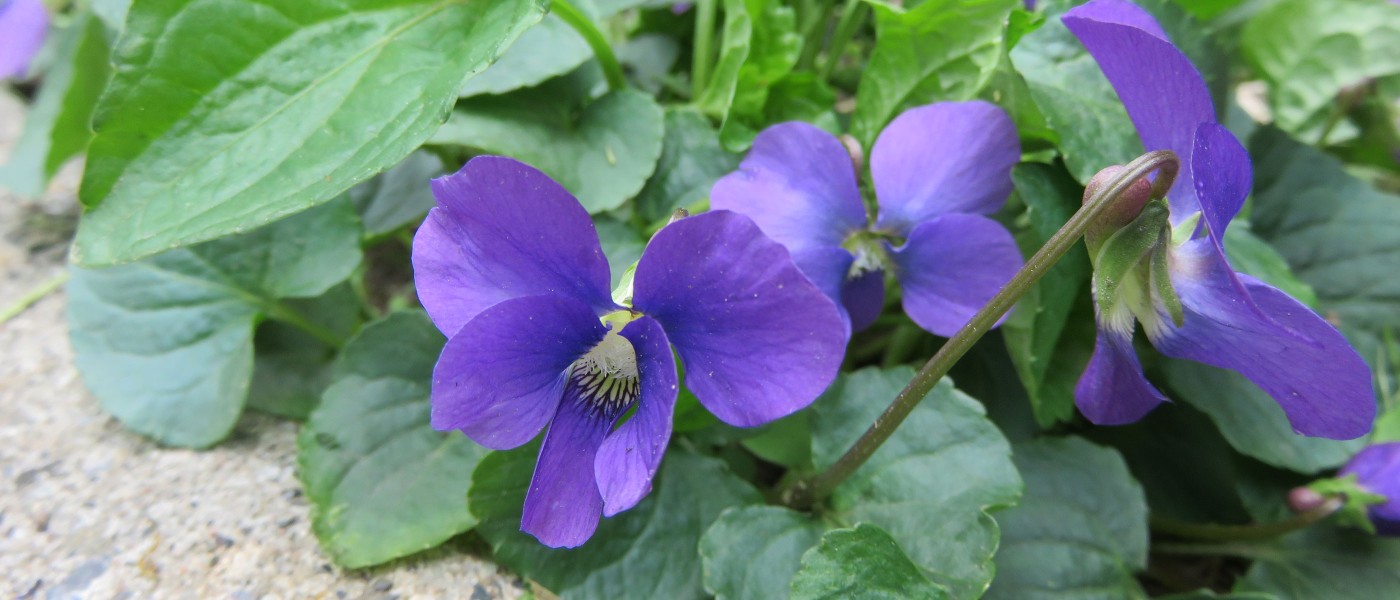Weed of the Month: Common Blue Violet
Roses are red, violets are…this month’s weedy plant! The common blue violet, (Viola sororia), the native Viola species most abundant in the eastern United States, has familiar petite flowers that range in color from deep purple to creamy white and lush, heart-shaped leaves that form a graceful spiral when they first emerge. The genus has been invoked as a symbol of love and modesty by everyone from Sappho to Shakespeare to Christina Rossetti. In the 1930s, a Broadway play even featured a lesbian character who wooed her lady love with violets, inspiring a violet fad as well as its nickname “the lesbian flower.”
Still, as beloved as violets are, they are considered weeds by many people, especially those seeking perfect lawns. Like most weeds, they are very resilient and have multiple strategies for reproducing. They thrive in partial shade and enjoy lots of moisture, and they can be stubborn to combat, resisting even repeated herbicide applications. Their dense, fibrous root system allows them to bounce back after mowing, and they can reproduce vegetatively via underground stems, or rhizomes.
Violets spread by seed, too! When ripe, their Y-shaped seedpods explode with surprising force, shooting seeds far and wide. They also employ myrmecochory, or dispersal by ants. Violet seeds are coated with protein- and lipid-rich morsels, called elaiosomes, which are a tasty, rich ant treat. The ants gather the seeds and bring them back to their nests to feed their larvae. Once the coating is consumed, the ants discard the seeds in their waste piles, effectively planting the seeds—a beautiful example of mutualism!
As if that weren’t enough, violets also produce cleistogamous, or self-pollinating, flowers. If you study a violet plant, you may notice strange, stunted-looking, oblong flowers that never open. These flowers have no need for pollinators—seed production can occur without them.
Violets are also edible. Toss the young leaves and flowers into salad, candy the flowers, or crush the petals to color sugar for decorating. So perhaps give up on that dream of the perfect lawn and instead celebrate the violet for all it has to offer: a colorful delicacy, a botanical curiosity, an interrupter of the mundane, and a treasure trove of cultural history.
The Weed of the Month series explores the ecology and history of the common wild plants that most gardeners consider weeds.


